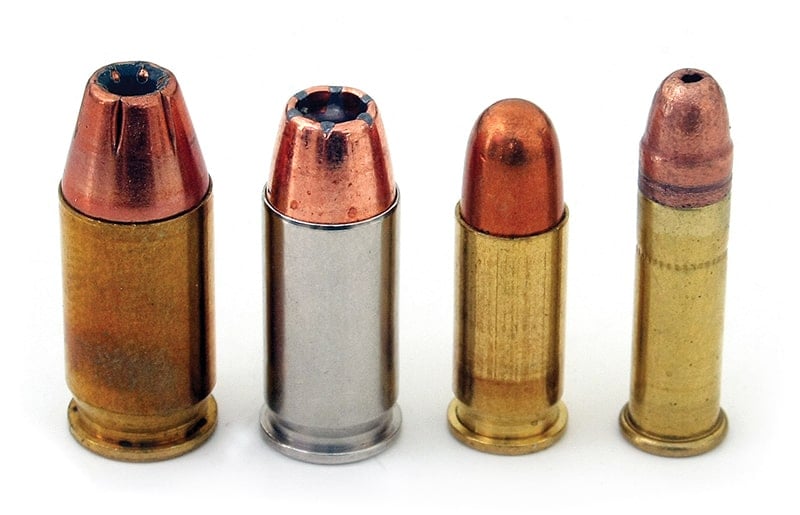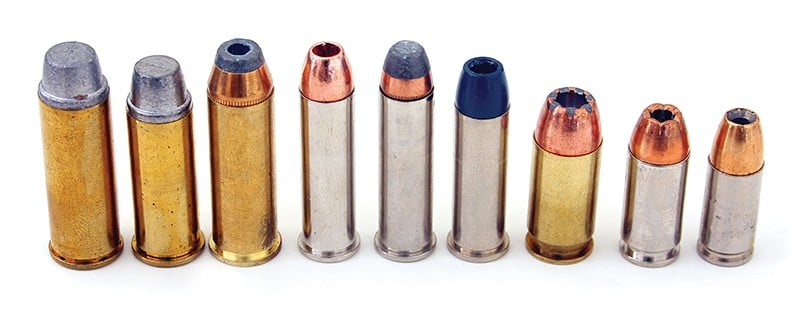Perfect Self-Defense Ammo?
I get regular inquires from readers asking about the “perfect” ammo for self-defense. I’m honestly glad you’re asking, I’m not even sure I’m the fellow you should be asking, but I have good help here so I can at least ask around if I’m stumped. I’d like to address some things to think about here, but keep in mind, please, please, don’t believe everything you read in the forums, or even in this esteemed magazine’s pages, without double-checking at least one other reliable reference source. Now, to answer the question, there are certain things I’ve found to be consistent — and bear mentioning when it comes to self-defense ammo.
There are no magic bullets and all bullets fail some of the time, so you need to be able to place any bullets you fire as accurately as possible. As Clint Smith would say, “Train to be marvelous, because during a gunfight you’ll probably only be mediocre — if you’re lucky.”
Bullet performance is full of myth and hyperbole, from the old “Hit a fellow in the thumb with a .45 and he’s going down” to “.223 bullets tumble when you fire them.” Don’t believe any of them unless you know otherwise for sure. There are no certainties when it comes to bullet performance and anyone who tells you otherwise (manufacturer or myth-maker) is guessing, at best.
I have personally been to the autopsies of many gunshot victims during my tenure as a cop. I was fortunate to be good friends with Gene Wolberg, a world-renowned forensic firearm’s criminalist who worked at our lab, and Gene took me under his wing. Gene has regrettably passed away, but he left me with a legacy of science- and fact-based information, and a tendency to ask for proof before I’ll believe anything I hear.
I can tell you first-hand it’s virtually impossible to tell the difference between gunshot wounds among the “major” .38/.357/.40/.45 calibers. Even the big guys like the .44 Magnum can usually be lumped in here. And the internal damage inflicted is also virtually impossible to differentiate from caliber to caliber. However, if you insist on using a “minor” caliber (think .380 or smaller in my opinion) then you’re on your own. No guarantees in my opinion, and the amount of damage they usually don’t do is often frighteningly noticeable.
Basically, if someone gets shot with a good quality expanding bullet from any of the “major” calibers listed — and the bullet performs as advertised — you’ll get the best “stopping” power you can expect from a handgun. And unless you hit someone in a central nervous system point (head, spine, etc.) there really isn’t any shock or “stopping” power, they simply bleed to death, some faster, some slower. This lowering of the blood pressure (due to loss of blood volume) eventually shuts off the brain. It might take three seconds, or it might take ten seconds or longer. You just never know. It’s a crap-shoot, so hit them well if you have to shoot. And, as Connor says, “It’s not enough to shoot them until you think they’re dead, you have to shoot them until they think they’re dead.”
It’s actually simple. Use a good gun, good ammo and practice with it. What’s a good gun? Probably the one you have. Like ammo, there is no magic gun, just good and bad ones. Oh, and the likelihood of you needing a fire extinguisher is only about a thousand times more probable than your ever needing a handgun; so make sure you have extinguishers around the house too. You do have some, right? Right?






